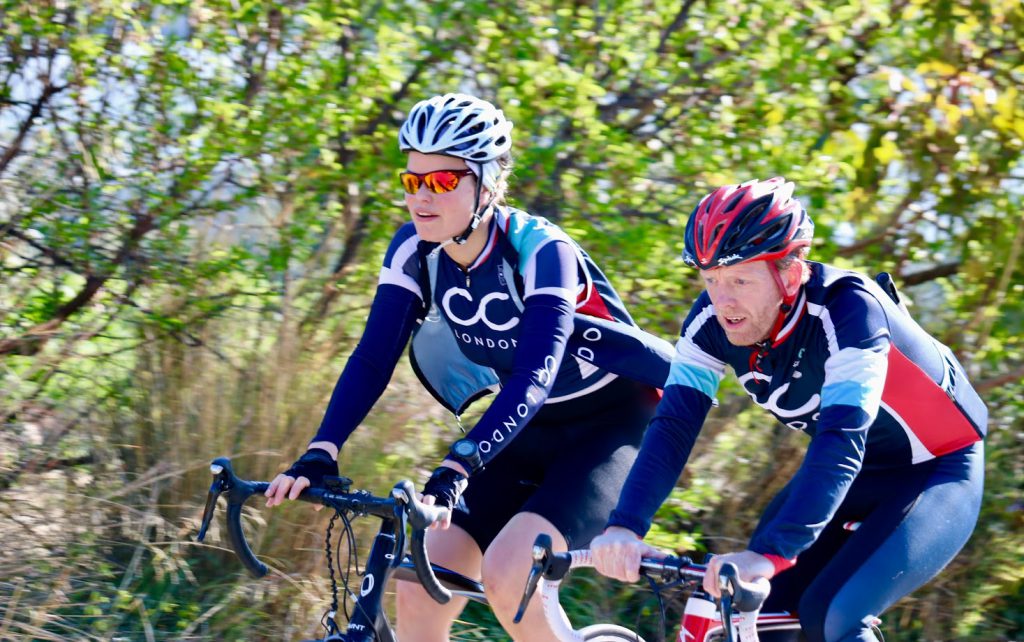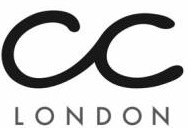Club rides are a fun, sociable way to make the miles pass and allows you to ride to new places without worrying about how to get there or get home. Every CCL club ride will have one or two leaders – they’ll know the route, and will always ensure nobody is left behind – which never happens. We all look out for each other, and help if anyone is in need.
New to group riding?
Many first time riders with CCL have never ridden in a group before, so don’t worry. But do explain this to the ride leader when you join the ride so they understand your experience level.
When riding in a group we always try to ride in twos. This enables us to ride safely in formation, will allow you to have a conversation with the rider next to you, and hopefully give you shelter from the wind when not at the front.

Group riding etiquette
Ride leaders
Ride leaders are responsible for the ride. They are ladies and gentlemen who volunteer, to help everyone to have a fun and safe time by planning a route and keeping the group together.
Make sure you introduce yourself to him or her on the day and speak to them if you have any questions at all. The leader will bring the group back to an agreed place (normally the start point). If you want to peel off early because you want to go faster, you want a longer / shorter ride or a more direct route home, that’s perfectly fine. Just let the ride leader know before you split (important).
What to bring to the rides?
• 2 spare inner tubes, tyre levers, multitool, mini pump and CO2 if you use these. Put them in your jersey pockets or a saddle bag
• Food: we love a coffee stop, but no matter what the length of the ride, it’s good to bring something to keep you going, eg, gels, bars, bananas (just don’t throw the skins into the bushes, they take a very long time to biodegrade)
• Drink: a bidon or two of water (mixed with electrolyte solution if you like)
• Money: for those coffee/cake stops (and pre- and post-ride coffees – did we mention we like coffee?). Also useful to bring a bank card, just in case you need to get a train back.
• Extra layers: the weather can be unpredictable, and you may have to stop (for punctures and mechanicals, etc), which means you’ll cool down. A race cape, which will fold nicely in your pocket, is pretty much essential.
• Dress appropriately for the weather – as Billy NoMates says: “Dress by the barometer, not the calendar!”
• Mobile phone (with ICE)
Tips when riding in a group

• Where possible, ride in twos – occasionally we will have to go in single file, in which case someone will shout, “Single!”
• Ride fairly close to the wheel in front of you… This helps keep the whole group in a nice neat formation and will also keep you out of the wind and save you energy (around 20%). Try not to look at the wheel in front, but up at the back of the rider in front – you’ll see so much more.
• When on the front, always ride at the same pace as the person next to you – your front wheel should never be in front of the person next to you, or vice versa (it’s called half-wheeling, and it really disrupts the rhythm of the group).
• Stick with the group. It’s not a race, so don’t start sprinting off the front or chasing Strava sections. Save that for solo rides.
• Try not to brake suddenly, for the sake of those behind you.
• Tell us if there’s a problem. Mechanical, puncture or struggling with the pace, don’t be shy and do tell someone in the group. Nobody EVER gets left behind and we will always stop and help.
• Relax: first time out in a group, it’s normal to be a little nervous. Relax, let your arms go loose and keep your eyes in the direction you are going, and your bike will duly follow.
Communicate!
This is usually done via hand signals and a call. It’s vital to pass this up and down the line – a call at the front can’t be heard at the back, and vice versa.
• If someone points to the floor, there’s a pothole/drain coming up.
• If the rider in front puts their arm across their back, this means there’s a car/obstruction on the inside and you need to move out to avoid it.
• A hand in the air means the group is slowing down to stop, usually at traffic lights.
Putting it all together


Calls and Hand Signals
These calls and signals are broadly common across most UK cycling clubs, there might be some slight variations, but learning these skills means you can cycle proficiently with any club. Where possible make the call and relevant hand signal at the same time.
| Call | Hand Signal | Explanation |
| STOPPING | ||
| SLOWING | ||
| ROLLING | ||
| LEFT / RIGHT TURN | ||
| OUT | ||
| SINGLE / SINGLE OUT | ||
| PAIR UP / TWO UP | ||
| CAR BACK | ||
| CAR UP | ||
| CAR | ||
| CAR UP | ||
| CAR BACK | ||
| CLEAR | ||
| ALL ON? | ||
| EASE UP | ||
| STEADY | ||
| ROTATE | ||
| Obstacles | ||
| HORSES | ||
| OUT | ||
| GRAVEL / HOLE / DOOR | ||
All of this might look like a lot of information and rules, but in reality it quickly becomes second nature and you’ll be surprised at how quickly it becomes normal.
